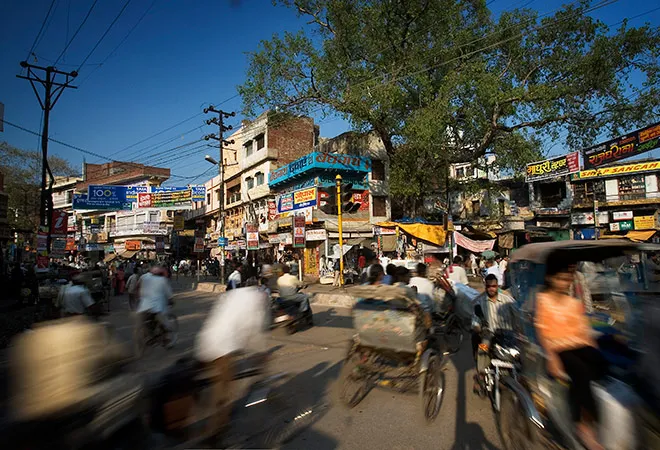It is common now to decry the competitive welfarism that is a feature of recent Indian elections. The state elections conducted towards the end of last year were won by the Congress party after it promised to waive outstanding agricultural loans. In this year’s general elections, the ruling Bharatiya Janata Party hopes its direct transfer to farmers announced — against all precedent — in the interim Budget would help sway some rural voters. The Congress, meanwhile, has announced a minimum income guarantee scheme that is considerably more expansive — but also appears far more difficult to implement, since it is not directly linked to land title. State parties have been even more munificent, to the degree that they seem able to afford to. It has escaped no politician’s attention that the party currently sitting prettiest in its home territory is the Telangana Rashtra Samithi, which also runs the most welfarist state government in India.
The arguments against competitive welfarism are well known. It is difficult to find the resources for it, and in the end it will have to be paid for either out of taxes or through borrowing and thus, eventually, inflation. Because of a relatively poor direct tax base, increasing taxes is difficult — and if done without major changes to the overall tax system will lead to greater incentives to evade, to relocate, and also contribute in the case of corporate income tax to retaining India’s uncompetitive status as a producer. This latter fact hurts workers in the long run as fewer companies will be set up. While India’s public debt remains relatively moderate on paper, contingent liabilities are growing, which lays the foundation for a future crisis. Higher borrowing would further crowd out private investment, once again reducing growth and job creation. And higher inflation is of course politically unpalatable as well as another disincentive to investment. Competitive welfarism at the state level also strains the federal structure of India as states begin to question how much money they are paying into the central kitty, how much they receive in return, the restrictions on their overall borrowing, and why there are constraints on them tapping the markets directly.
The arguments against competitive welfarism are well known. It is difficult to find the resources for it, and in the end, it will have to be paid for either out of taxes or through borrowing and thus, eventually, inflation
However, democratic politics has its own momentum, and it is one born of the lived experience of the population. And it is important to understand that India has not entered another welfarist age for no reason whatsoever. It is the Indian state’s recent failure to deliver inclusive growth to which democratic and electoral politics is responding.
The experience of inclusive growth creates support for responsible economic stewardship. It is not necessarily expressed in that manner — it is more often presented as support for a status quo, or for an existing policy architecture to which in India, more often than not, all political parties implicitly subscribe. In the absence of inclusive growth, that support erodes.
The experience of jobless growth — a form of non-inclusive growth — is particularly problematic. This is because the large army of job-seekers become the most politically sought-after constituency. The temptation to build up the government salary bill in order to partially satisfy them will be great. In the absence of confidence that incomes will be secure and increasing, the sort of confidence provided by the experience of job-creating inclusive growth, voters will demand that the state step in to protect and increase their incomes. There is considerable cross-country empirical work that shows voter assumptions about the link between individual action and future incomes play into their political preferences in terms of economic policy. If in India voters have been led to believe that there is no link between building up human capital or ambition and their future income prospects, then they will hardly vote to support an economic consensus that assumes such a link. No politician will say in 2019 that responsible economic policy will provide income security. This is because both “sides” have had a chance to implement responsible economic policy over the past decade, and India has endured jobless growth for at least that same period of time. Is India therefore stuck in a downward spiral? The lack of inclusive growth leads to pressure towards welfarism, which reduces the chances for inclusive growth further, and so on? There is a good chance of this coming to pass.
However, there is also a way out. This depends upon accepting the failure of inclusive growth in the recent past, and on the political necessity of welfarism today. It also however requires the form of welfarism to be intelligently and rationally designed to increase the chances of re-creating an observed link, for voters, between building up their human capital and future income security. It would also require, at the macro level, ensuring that welfarism is structured to increase the Indian workforce’s potential productivity. This might go some way towards ameliorating the negative macro-economic effects of greater spending. In the best case scenario, it will more than pay for itself in the long run.
It is not certain whether income support is the best way to go about this. But it will at least have the effect of improving the ability to spend time away from active work in order to build up human capital, reduce the costs of search and matching in the job market, and increase risk-taking.
It is not certain whether income support is the best way to go about this. But it will at least have the effect of improving the ability to spend time away from active work in order to build up human capital, reduce the costs of search and matching in the job market, and increase risk-taking.
More effective will be increasing government spending on health and basic education, as well as on the administrative machinery required to properly implement these policy priorities. Universal health care will enhance productivity. It cannot be done on the cheap, however, as it will require the government to closely monitor private providers (if any) or to pay for more of its own healthcare employees. Education, meanwhile, especially primary education, requires a more direct focus on improving outcomes — the RTE was a “cheap” solution that will not work in the long run. Financing for adult training, including online education, also needs to be bountiful in order to incentivise the choice to build up human capital.
If there is no sign of a political consensus for reformist or responsible economic policy-making, then we have to realise this is a consequence of the failure to deliver for the past decade or more on disposable income growth and security. Instead of bemoaning the entirely predictable consequence of this failure, it is time to ask how to shape the welfarist agenda in a manner that long-term Indian growth is assured.
This commentary originally appeared in Business Standard.
The views expressed above belong to the author(s). ORF research and analyses now available on Telegram! Click here to access our curated content — blogs, longforms and interviews.




 PREV
PREV


